- Growing Onions: How to Cultivate and Care for These Delicious Bulbs
- 1. Choosing the Right Variety
- 2. Planting Onions
- 3. Providing Adequate Water
- 4. Fertilizing Onions
- 5. Controlling Weeds
- 6. Harvesting Onions
- 7. Common Onion Pests and Diseases
- 8. Enjoying Your Homegrown Onions
- Soil Preparation for Successful Onion Harvest
- 1. Choose the Right Location
- 2. Clear the Area
- 3. Test the Soil
- 4. Improve Drainage
- 5. Add Nutrients
- 6. Till the Soil
- 7. Create Raised Beds
- 8. Mulch the Soil
- 9. Water Properly
- Planting Onions: The Dos and Don’ts for Optimal Growth
- The Dos:
- The Don’ts:
- Watering and Fertilizing Onions: Keeping Them Well-Nourished
- Watering
- Fertilizing
- Controlling Pests and Diseases: Protecting Your Onion Crop
- Pest Control
- Disease Prevention
- General Tips
- Harvesting and Storing Onions: Tips for Proper Preservation
- 1. Harvesting Onions
- 2. Curing Onions
- 3. Storing Onions
- 4. Checking and Using Stored Onions
- Onion Varieties: Choosing the Right Type for Your Garden
- 1. Yellow Onions
- 2. White Onions
- 3. Red Onions
- Companion Planting with Onions: Enhancing Garden Health
- 1. Carrots
- 2. Tomatoes
- 3. Lettuce
- 4. Cabbage Family
- 5. Herbs
- 6. Avoid Planting with Legumes
- Common Onion Growing Problems and How to Solve Them
- 1. Lack of Onion Bulb Formation
- 2. Onion Bolting
- 3. Onion Pests and Diseases
- 4. Poor Onion Storage
- “Question-Answer”
- What are some tips for growing onions in my vegetable garden?
- Which varieties of onions are best for growing in a vegetable garden?
- How do I store onions after harvesting them?
- Can I grow onions in containers or pots?
- What are some common pests and diseases that affect onions?
- How long does it take for onions to grow?
- “Video” What Happens When You REGROW Vegetables From Kitchen SCRAPS in the Garden?
Onions are a staple in many kitchens around the world, known for their unique flavor and versatility in various dishes. Whether you’re an experienced gardener or a beginner, growing your own onions can be a rewarding and cost-effective endeavor. In this article, we’ll provide you with useful tips on how to successfully grow onions in your vegetable garden, as well as how to store them properly for long-lasting freshness.
When it comes to onion varieties, there are numerous options to choose from, each with its own distinct flavor profile and culinary uses. From sweet and mild Vidalia onions to pungent shallots and red onions, the choices are endless. We’ll explore some of the most popular onion varieties and help you decide which ones are best suited for your garden and cooking preferences.
Proper storage is essential for preserving the flavor and texture of your onions. Whether you harvest your own onions or purchase them, understanding the best storage methods will ensure that they stay fresh for longer periods. We’ll share expert tips on how to store onions correctly, including the ideal temperature and humidity levels, as well as the best containers to use.
Whether you’re a beginner gardener looking to start your first vegetable garden or an experienced onion grower looking to expand your knowledge, this article is a comprehensive guide to help you successfully grow, store, and enjoy fresh onions straight from your garden.
Growing Onions: How to Cultivate and Care for These Delicious Bulbs
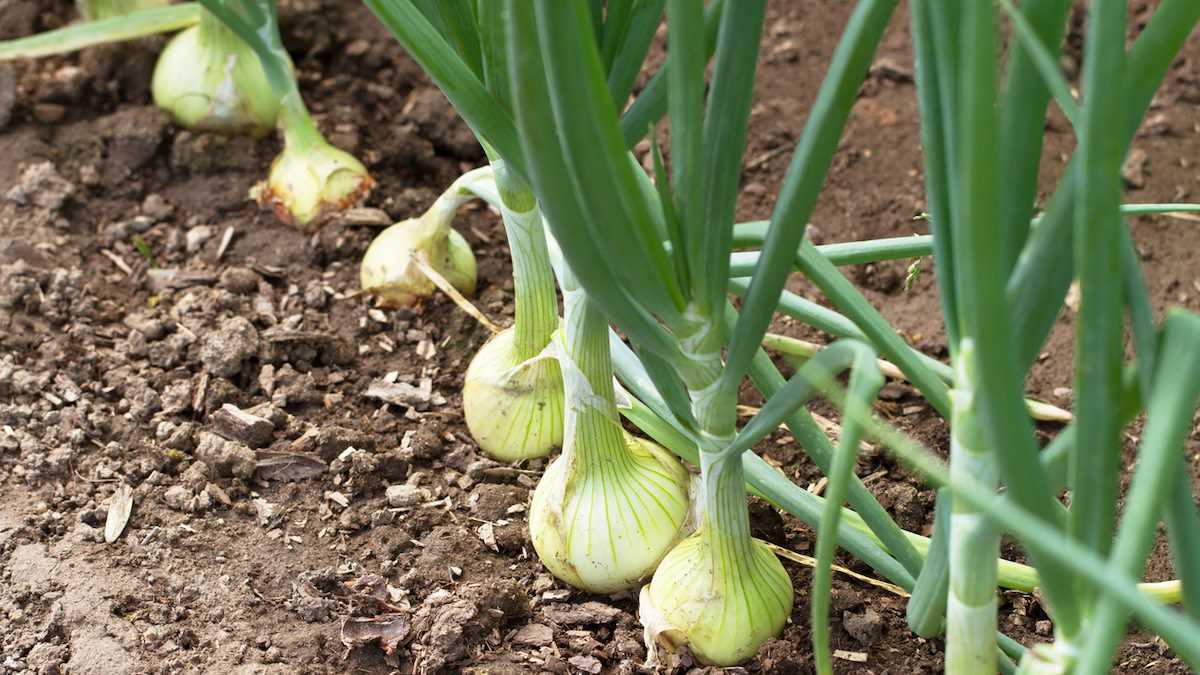
Onions are a versatile and flavorful vegetable that can be grown in your own backyard. Whether you’re a seasoned gardener or just starting out, cultivating onions is a rewarding experience. Here are some tips to help you grow and care for these delicious bulbs:
1. Choosing the Right Variety
There are many different varieties of onions to choose from, each with its own flavor and storage characteristics. Some popular varieties include Yellow Sweet Spanish, Red Burgundy, and White Lisbon. Consider your climate and personal preference when selecting the right variety for your garden.
2. Planting Onions
Onions can be grown from seeds, sets, or transplants. Seeds take the longest to mature, while sets and transplants offer a head start. Plant onions in well-draining soil that is rich in organic matter. Space them about 6 inches apart in rows that are 12-18 inches apart.
3. Providing Adequate Water
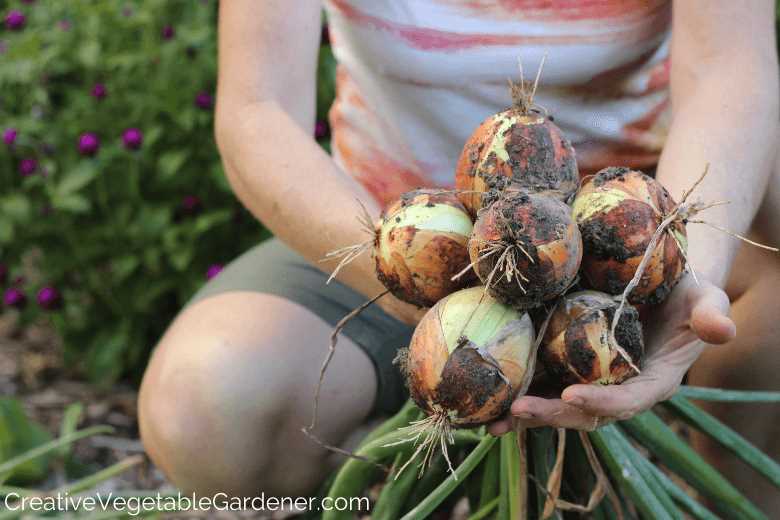
Onions require consistent moisture for optimal growth. Water them regularly, especially during dry periods. Avoid overwatering, as it can lead to disease and rot. Aim to keep the soil evenly moist, but not waterlogged.
4. Fertilizing Onions
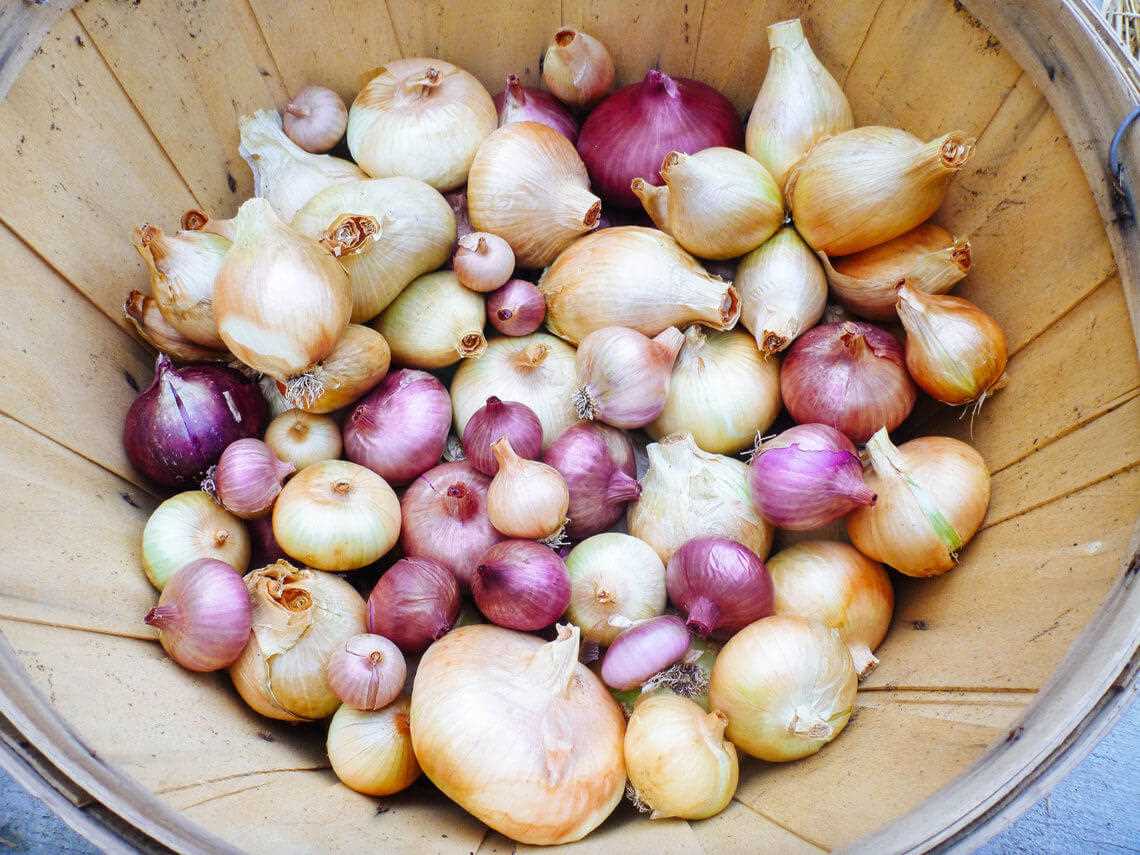
Onions are heavy feeders and benefit from regular fertilization. Apply a balanced fertilizer, such as 10-10-10, at planting and again when the bulbs begin to form. Avoid excessive nitrogen, as it can promote leafy growth instead of bulb development.
5. Controlling Weeds
Weeds can compete with onions for nutrients and water, so it’s important to keep them under control. Mulching around the plants can help suppress weeds and retain moisture. Hand pulling or hoeing weeds is also effective, just be careful not to disturb the onion bulbs.
6. Harvesting Onions
Onions are ready to harvest when the tops start to yellow and fall over. Gently lift the bulbs from the ground and let them dry in a warm, well-ventilated area for a few days. Once dry, trim the tops and roots, and store the onions in a cool, dry place.
7. Common Onion Pests and Diseases
Onions can be susceptible to pests like onion maggots and diseases like onion downy mildew. To prevent infestations and diseases, practice crop rotation, remove and destroy infected plants, and keep the garden clean and weed-free.
8. Enjoying Your Homegrown Onions
Once you’ve harvested and stored your onions, you can enjoy them in a variety of delicious dishes. From soups and stews to stir-fries and salads, onions add flavor and depth to many recipes. Experiment with different cooking methods to bring out the best of your homegrown onions.
By following these tips, you’ll be well on your way to cultivating and caring for your own delicious onions. Enjoy the satisfaction of growing your own food and savor the rich flavors of homegrown onions in your meals.
Soil Preparation for Successful Onion Harvest
Preparing the soil properly is essential for a successful onion harvest. The right soil conditions provide the necessary nutrients, drainage, and pH levels for the onions to thrive. Here are some tips for preparing the soil:
1. Choose the Right Location
Onions prefer a sunny location with well-draining soil. Select a spot in your garden that receives at least 6 hours of direct sunlight each day. Avoid areas with heavy clay soil, as it can lead to poor drainage and hinder onion growth.
2. Clear the Area
Remove any weeds, grass, or debris from the area where you plan to plant your onions. These can compete with the onions for nutrients and water, so it’s important to clear them out before planting.
3. Test the Soil
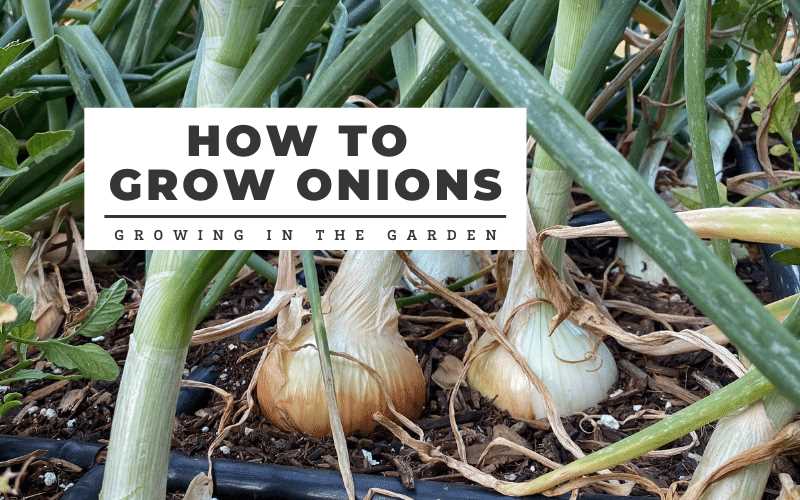
Before planting onions, test the pH level of your soil. Onions prefer a slightly acidic soil with a pH level between 6.0 and 6.8. If the pH level is too high or too low, you can adjust it by adding lime to raise the pH or sulfur to lower it.
4. Improve Drainage
If your soil has poor drainage, you can amend it by adding organic matter such as compost or well-rotted manure. This will help improve the soil’s structure and allow excess water to drain more efficiently, preventing waterlogged conditions that can be detrimental to onion growth.
5. Add Nutrients
Onions require a balanced supply of nutrients to grow properly. Before planting, incorporate a slow-release fertilizer or organic matter into the soil to provide the necessary nutrients. Follow the package instructions for application rates.
6. Till the Soil
Use a garden tiller or a garden fork to loosen the soil to a depth of at least 8 inches. This will help break up any compacted soil and create a loose, friable texture that onions can easily penetrate.
7. Create Raised Beds
Consider creating raised beds for growing onions. This can improve drainage and prevent the soil from getting compacted. Raised beds also help to separate onions from other plants that may compete for nutrients and space.
8. Mulch the Soil
After planting the onions, apply a layer of organic mulch around the plants. Mulching helps to conserve moisture in the soil, suppress weed growth, and regulate soil temperature. Use straw, chopped leaves, or grass clippings as mulch.
9. Water Properly
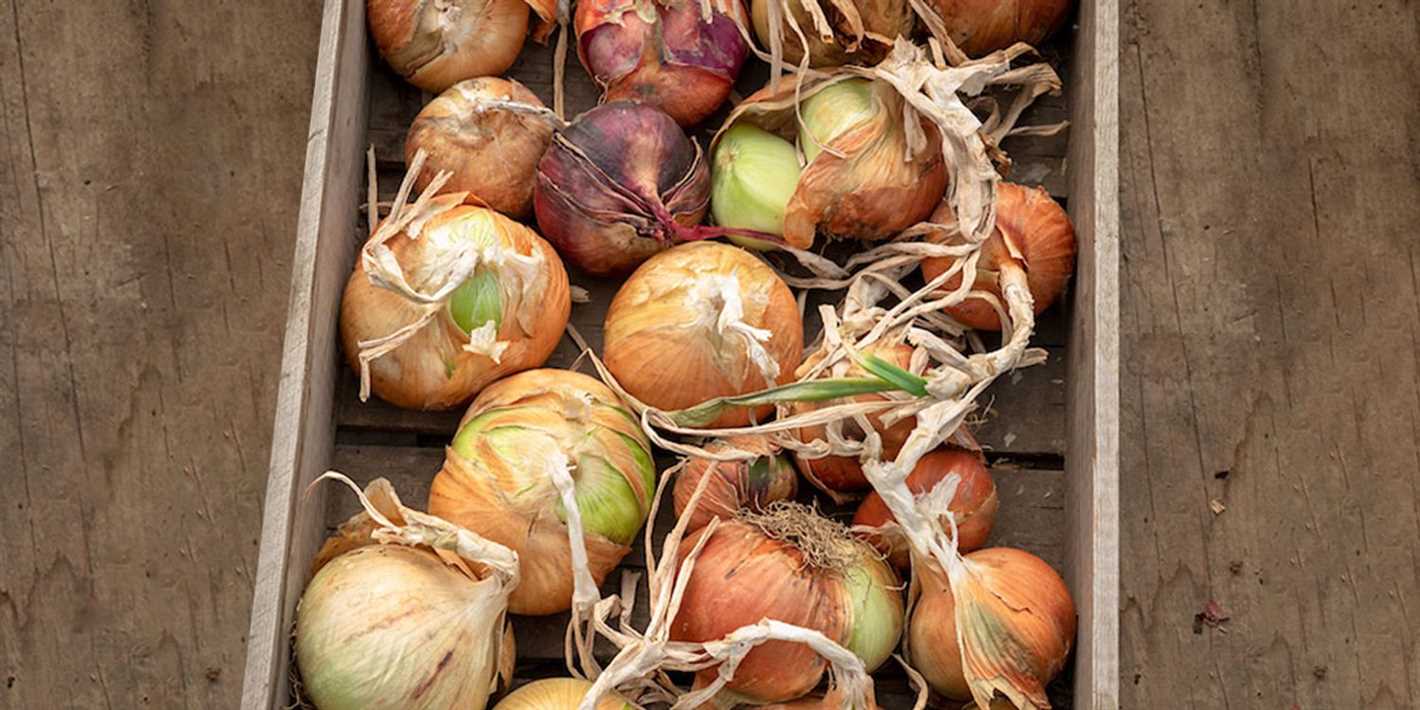
Onions need regular moisture, especially during dry periods. Water the plants deeply at least once a week, providing enough water to reach the roots. Avoid overwatering, as this can lead to rot and other diseases.
By following these tips for soil preparation, you’ll create the ideal growing conditions for onions and increase your chances of a successful harvest.
Planting Onions: The Dos and Don’ts for Optimal Growth
Planting onions is a straightforward task that can yield a bountiful harvest if done correctly. Follow these dos and don’ts to ensure optimal growth and a successful onion crop in your vegetable garden.
The Dos:
- Choose the right time: Onions can be planted in early spring or fall, depending on your climate. Consult your local garden center or extension office for the recommended planting dates for your area.
- Prepare the soil: Onions prefer well-drained soil with organic matter. Prior to planting, amend the soil with compost or well-rotted manure to improve fertility and drainage.
- Select the right onion variety: There are various onion varieties, each with its own characteristics. Choose the type that suits your desired taste, size, and storage needs. Common varieties include yellow, red, and white onions.
- Plant onion sets or seedlings: Onions can be grown from sets (small bulbs) or purchased seedlings. Plant the sets or seedlings about 1 inch deep and 4-6 inches apart.
- Keep the soil moist: Onions need consistent moisture during their growing season. Water the plants regularly to keep the soil evenly moist but not waterlogged.
- Control weeds: Weeds compete with onions for nutrients and moisture. Regularly weed around the onion plants to ensure they have access to essential resources.
- Fertilize appropriately: Onions benefit from a balanced fertilizer. Apply a nitrogen-rich fertilizer when the plants have established themselves and then follow up with a phosphorus and potassium-rich fertilizer during bulb formation.
The Don’ts:
- Plant onions too deeply: Planting onions too deeply can hinder their growth and bulb development. Make sure to only plant them about 1 inch deep.
- Overwater the onions: While onions require consistent moisture, overwatering can lead to rot and other diseases. Avoid standing water or waterlogged soil.
- Neglect weed control: Weeds can quickly take over and smother onion plants. Regularly check and remove any weeds to prevent competition.
- Forget to thin the plants: If you planted onion sets or seedlings too close together, thin them out once they have grown a few inches to allow sufficient space for bulb development.
- Plant onions in the same spot each year: Onions are susceptible to soil-borne diseases and pests. Avoid planting onions in the same location year after year to minimize the risk of recurring issues.
- Expect instant results: Onions take time to mature and develop bulbs. Be patient and give them the time they need to reach their full potential.
By following these dos and don’ts, you can ensure optimal growth and a successful onion crop in your vegetable garden. Enjoy the satisfaction of harvesting your own homegrown onions for use in a variety of delicious dishes!
Watering and Fertilizing Onions: Keeping Them Well-Nourished
Proper watering and fertilizing is essential for growing healthy onions. Here are some tips on how to keep your onions well-nourished:
Watering
- Onions require consistent moisture for proper growth and bulb formation. They should receive about 1 inch of water per week, either from rainfall or supplemental irrigation.
- Water deeply and infrequently to encourage the roots to grow deeper into the soil. This helps the onions become more resistant to drought.
- Avoid overwatering as it can lead to rot and disease. Ensure that the soil has good drainage to prevent waterlogged conditions.
- In hot and dry weather, onions may require additional watering. Monitor the soil moisture and adjust the watering accordingly.
Fertilizing
- Onions have specific nutrient requirements for proper growth. Before planting, amend the soil with organic matter such as compost to improve its fertility.
- Apply a balanced fertilizer, such as a 10-10-10 or 14-14-14, at planting time. Follow the instructions on the fertilizer package for application rates.
- As the onions grow, side-dress them with nitrogen-rich fertilizers, such as blood meal or fish emulsion, every 3-4 weeks. This helps promote leaf growth and bulb development.
- Avoid over-fertilizing, as it can result in excessive foliage growth at the expense of bulb formation. Follow the recommended application rates to prevent nutrient imbalances.
- Monitor the plants closely for any signs of nutrient deficiencies, such as yellowing leaves, and address them promptly with appropriate fertilization.
By providing adequate watering and fertilization, you can ensure that your onions receive the nourishment they need to grow into healthy, flavorful bulbs.
Controlling Pests and Diseases: Protecting Your Onion Crop
Growing onions can be a rewarding experience, but it’s important to protect your crop from pests and diseases to ensure a successful harvest. Here are some tips to help you keep your onion plants healthy:
Pest Control
- Onion fly: Use a floating row cover to create a barrier between your plants and the flies. This will prevent them from laying their eggs on the onion plants.
- Thrips: Introduce natural predators such as ladybugs or lacewings to your garden to control thrip populations. You can also spray insecticidal soap on the leaves to deter them.
- Onion maggots: Rotate your onion crops each year to reduce the risk of onion maggot infestations. Applying beneficial nematodes to the soil can also help control the larvae.
Disease Prevention
- Fungal diseases: To prevent fungal diseases such as onion downy mildew and onion white rot, avoid overhead watering and provide good air circulation around the plants by spacing them adequately.
- Bacterial diseases: Plant disease-resistant onion varieties to minimize the risk of bacterial diseases like onion bacterial soft rot. It’s also important to practice crop rotation to prevent the build-up of pathogens in the soil.
General Tips
Healthy soil: Start with healthy soil by adding organic matter, such as compost, to improve soil fertility and drainage. Healthy plants are more resistant to pests and diseases.
Proper watering: Avoid overwatering as it can lead to root rot and other fungal diseases. Water the onion plants deeply and less frequently to promote deep root growth.
Mulching: Apply a layer of organic mulch around the onion plants to help conserve moisture and suppress weed growth. This will also create a barrier between the soil and the onion bulbs, reducing the risk of soil-borne diseases.
Vigilance: Regularly inspect your onion plants for any signs of pests or diseases. Early detection can help prevent the spread of problems and allow for timely intervention.
By following these tips, you can help protect your onion crop from pests and diseases, ensuring a bountiful harvest of delicious and healthy onions.
Harvesting and Storing Onions: Tips for Proper Preservation
Harvesting onions at the right time and storing them properly are crucial for ensuring their longevity and maintaining their quality. Here are some tips for harvesting and storing onions:
1. Harvesting Onions
- Onions are ready for harvest when their tops have fallen over and started to dry.
- Gently loosen the soil around the onions using a garden fork or trowel.
- Lift the onions out of the ground, being careful not to damage them.
- Leave the onions in the garden to dry for a few days, preferably in a well-ventilated area away from direct sunlight. This will help the outer layers of the onions dry and form a protective layer.
2. Curing Onions
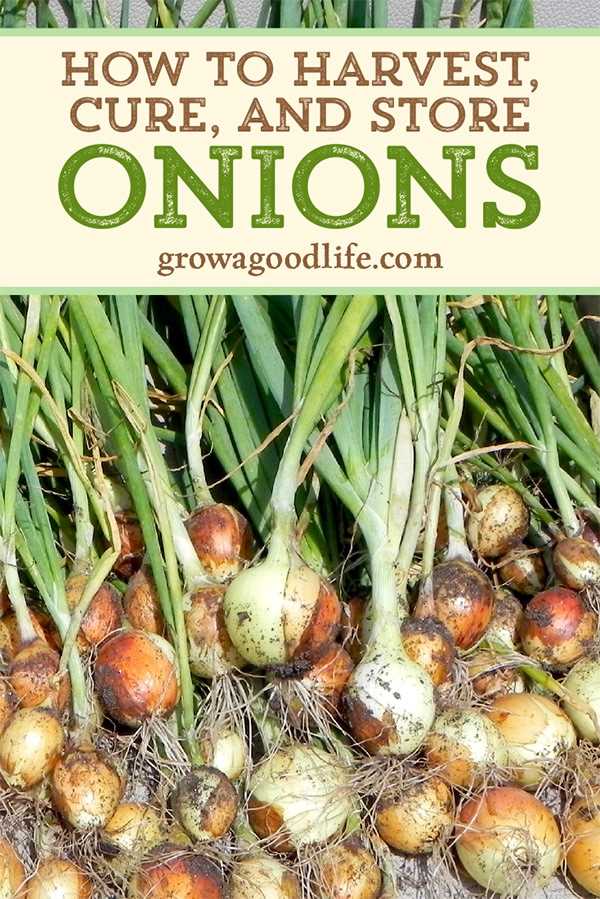
- After the onions have dried in the garden, they need to be cured for long-term storage.
- Trim the roots and cut back the tops to about one inch.
- Place the cured onions in a single layer on a rack or screen in a cool, dry, and well-ventilated area.
- Allow the onions to cure for 2-3 weeks. During this time, the outer layers will continue to dry and any remaining moisture will evaporate.
3. Storing Onions
- Once the onions have completed the curing process, they can be stored for several months.
- Choose a storage location that is cool, dark, and dry, with a temperature between 32-40°F (0-4°C).
- Store the onions in mesh bags, nylon stockings, or crates that allow for good air circulation.
- Avoid storing onions near potatoes, as the gases released by potatoes can cause the onions to spoil.
4. Checking and Using Stored Onions
- Regularly check the stored onions for any signs of spoilage, such as soft spots or mold.
- Remove any spoiled onions immediately to prevent them from spoiling the rest of the batch.
- Stored onions can be used in various culinary applications. Simply peel off the papery skin and use as desired in soups, stews, salads, and other dishes.
By following these tips for harvesting and storing onions, you can ensure that your homegrown onions stay fresh and flavorful for months to come.
Onion Varieties: Choosing the Right Type for Your Garden
When it comes to growing onions in your vegetable garden, choosing the right variety can make a big difference in the success of your crop. There are several different types of onions, each with its own unique flavor, size, and storage characteristics. Here are some popular onion varieties to consider:
1. Yellow Onions
- Vidalia: This sweet variety is known for its mild flavor and is perfect for eating raw in salads or on sandwiches.
- Spanish: These large onions have a strong flavor and are ideal for cooking in stews, soups, and other dishes.
- Walla Walla: Grown in the Pacific Northwest, these onions are known for their sweet taste and are great for grilling or caramelizing.
2. White Onions
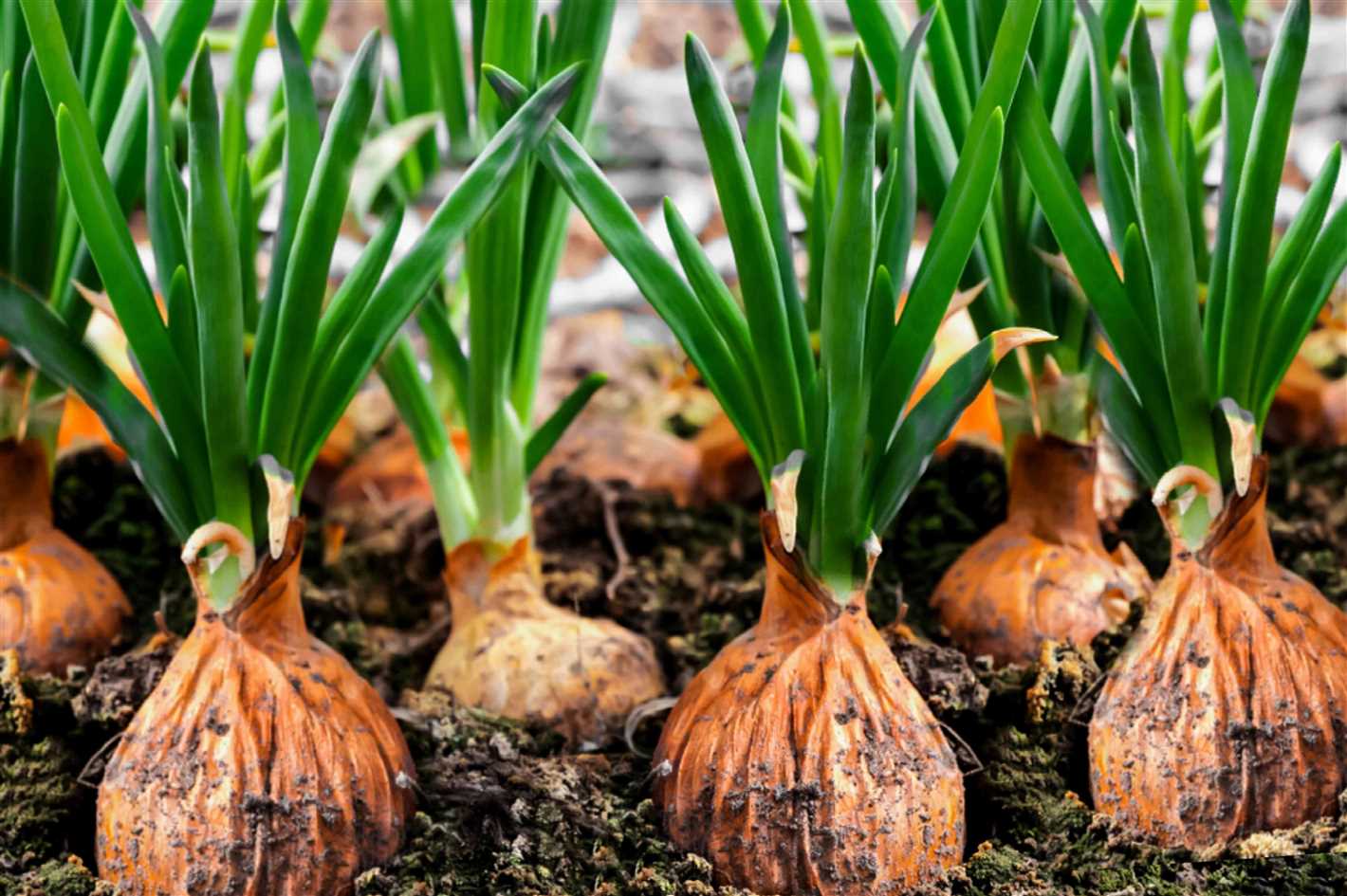
- Bermuda: These onions have a mild flavor and are often used in salsas, Mexican dishes, and other recipes that call for raw onions.
- Italian: With a slightly sweet taste, these onions are perfect for roasting, grilling, or using in soups and stews.
- Texas Super Sweet: As the name implies, these onions are incredibly sweet and can be enjoyed raw or cooked.
3. Red Onions
- Red Candy Apple: These onions have a vibrant red color and a sweet, mild flavor. They’re great for salads and sandwiches.
- Red Torpedo: With a unique torpedo shape, these onions have a slightly spicy taste and are perfect for grilling or roasting.
- Red Zeppelin: These onions have a deep red color and a strong flavor that is ideal for cooking, especially in Mediterranean dishes.
When choosing onion varieties for your garden, consider your personal taste preferences and what type of dishes you plan to use the onions in. Additionally, check the recommended growing conditions for each variety to ensure they will thrive in your garden.
| Variety | Flavor | Best Uses | Storage |
|---|---|---|---|
| Vidalia | Sweet, Mild | Raw, Salads, Sandwiches | Short Shelf Life |
| Spanish | Strong | Cooking, Stews, Soups | Long Storage |
| Walla Walla | Sweet | Grilling, Caramelizing | Short Shelf Life |
| Bermuda | Mild | Salsas, Raw Dishes | Medium Storage |
| Italian | Slightly Sweet | Roasting, Grilling, Soups, Stews | Medium Storage |
| Texas Super Sweet | Very Sweet | Raw, Cooked | Short Shelf Life |
| Red Candy Apple | Sweet, Mild | Salads, Sandwiches | Short Shelf Life |
| Red Torpedo | Slightly Spicy | Grilling, Roasting | Medium Storage |
| Red Zeppelin | Strong | Cooking, Mediterranean Dishes | Long Storage |
With so many onion varieties to choose from, you’ll be sure to find the perfect type for your garden. Consider the flavor and storage characteristics of each variety, and don’t be afraid to try something new. Happy onion gardening!
Companion Planting with Onions: Enhancing Garden Health
Companion planting is a gardening technique that involves planting different plants together to provide mutual benefits. When it comes to onions, there are several plants that make great companions and can enhance the health of your vegetable garden. Here are some tips for companion planting with onions:
1. Carrots
Onions and carrots are excellent companions in the garden. Onions repel carrot flies, which can be a common pest for carrots, while carrots help deter onion flies. Planting these two vegetables together can help protect them from insect damage.
2. Tomatoes
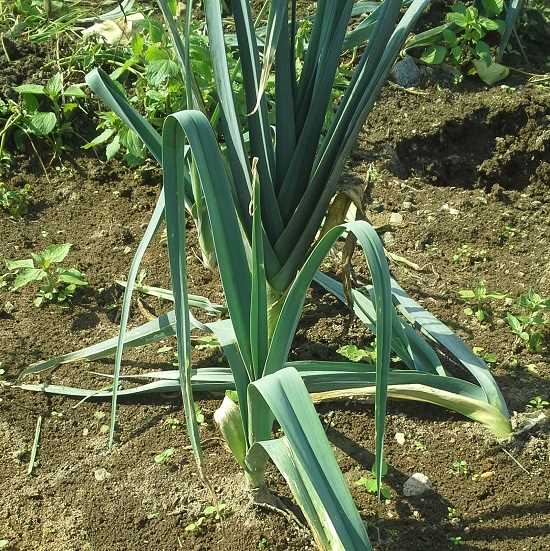
Tomatoes and onions also make good companions in the garden. Onions repel aphids, which can be a common problem for tomatoes, while tomatoes help deter onion flies. Additionally, the strong scent of onions can help mask the scent of ripening tomatoes, reducing the risk of attracting pests.
3. Lettuce
Lettuce and onions can be planted together to help deter slugs and snails. Onions have a strong odor that repels these garden pests, while lettuce provides ground cover that can help keep the soil cool and moist, which is beneficial for both crops.
4. Cabbage Family
Onions can also be beneficial when planted with members of the cabbage family, such as cabbage, broccoli, and kale. Onions help deter cabbage worms and other pests that can damage these crops. Additionally, the scent of onions can help mask the scent of these vegetables, reducing the risk of attracting pests.
5. Herbs
Many herbs, such as parsley, basil, and dill, can be great companions for onions. These herbs can help repel pests that commonly affect onions, such as onion flies and aphids. Additionally, planting herbs near onions can enhance the flavor of both plants.
6. Avoid Planting with Legumes
While onions have many beneficial companions, it’s important to avoid planting them with legumes, such as beans and peas. Legumes have a symbiotic relationship with nitrogen-fixing bacteria, which can compete with onions for nitrogen in the soil.
By practicing companion planting with onions, you can enhance the health of your vegetable garden and reduce the risk of pests. Consider these companion plants when planning your onion garden bed to maximize the benefits and create a harmonious planting scheme.
Common Onion Growing Problems and How to Solve Them
Despite being a relatively easy vegetable to grow, onions can sometimes face challenges. Here are some common problems that you may encounter while growing onions and how to solve them:
1. Lack of Onion Bulb Formation
- Ensure that you are planting the right type of onion for your growing zone and the correct time of the year.
- Provide enough sunlight to the onion plants, as they require at least 6-8 hours of direct sunlight per day.
- Make sure the soil pH is between 6.0 and 7.0, as onions prefer slightly acidic soil.
- Water the plants adequately, ensuring that the soil is moist but not waterlogged, as excessive moisture can prevent bulb formation.
2. Onion Bolting
- Bolting is the premature flowering of onion plants. To avoid this, plant onion varieties that are less prone to bolting.
- Ensure that the onion seedlings are not exposed to cold temperatures, as this can trigger bolting.
- Water the plants regularly to prevent them from becoming stressed, as stress can also lead to bolting.
- Harvest the onions as soon as they reach maturity, as delaying the harvest can increase the risk of bolting.
3. Onion Pests and Diseases
Onions can be susceptible to various pests and diseases. Here are some common ones and how to manage them:
| Pest/Disease | Symptoms | Solution |
|---|---|---|
| Onion Maggots | Yellowing, wilting, and stunted growth of leaves. Presence of maggots in the root zone. | Use floating row covers to prevent adult flies from laying eggs. Apply insecticides labeled for onion maggots if necessary. |
| Onion Thrips | Silver or bronze spots on onion leaves. Leaf distortion and wilting. | Regularly inspect plants and remove infested leaves. Use insecticidal soaps or neem oil to control thrips. |
| Fungal Diseases (e.g., Downy Mildew, Pink Root) | Yellowing, wilting, and browning of leaves. Presence of fungal growth on leaves, stems, or bulbs. | Rotate onion crops to prevent the buildup of fungal spores. Remove and destroy infected plants. Apply fungicides as a preventative measure. |
4. Poor Onion Storage
- Harvest the onions when their necks have fully dried and the tops have fallen over naturally.
- Cure the onions in a well-ventilated area for about two weeks until the skins become papery.
- Store the onions in a cool, dry, and dark place with good air circulation, such as a basement or pantry.
- Check the onions regularly for any signs of rot or decay, and remove any spoiled onions to prevent the spread of diseases.
By identifying and addressing these common onion growing problems, you can ensure a successful and bountiful onion harvest in your vegetable garden.
“Question-Answer”
What are some tips for growing onions in my vegetable garden?
Some tips for growing onions in your vegetable garden include choosing the right variety for your region, starting from seed or sets, ensuring proper spacing and soil preparation, providing adequate water and nutrients, and practicing proper weed and pest control.
Which varieties of onions are best for growing in a vegetable garden?
There are many varieties of onions that are suitable for growing in a vegetable garden. Some popular choices include yellow onions, red onions, and white onions. It’s a good idea to choose varieties that are well-suited to your particular climate and growing conditions.
How do I store onions after harvesting them?
After harvesting onions, it’s important to properly store them in order to extend their shelf life. Remove the tops and allow the onions to dry in a cool, well-ventilated area for a few weeks. Once dry, store them in a cool, dry place with good air circulation, such as a mesh bag or crate. Avoid storing onions near potatoes or other fruits and vegetables that release moisture, as this can cause them to spoil.
Can I grow onions in containers or pots?
Yes, onions can be grown in containers or pots. Choose a container that is at least 6 inches deep and has good drainage. Fill the container with a well-draining potting mix and plant onion sets or seedlings at the recommended spacing. Water regularly and provide adequate sunlight. Container-grown onions may be smaller in size but can still be delicious and fresh.
What are some common pests and diseases that affect onions?
Common pests that affect onions include onion maggots, thrips, and onion fly. Diseases that can affect onions include fungal infections like white rot and downy mildew. To prevent these issues, practice crop rotation, keep the garden clean and tidy, and consider using organic pest control methods such as neem oil or insecticidal soap.
How long does it take for onions to grow?
The time it takes for onions to grow varies depending on the variety and growing conditions. Onions can take anywhere from 90 days to over 120 days to reach maturity. It’s important to check the specific variety you’re growing for a more accurate timeline. Onions can be harvested when the bulbs have reached the desired size and the tops have fallen over and started to dry.







